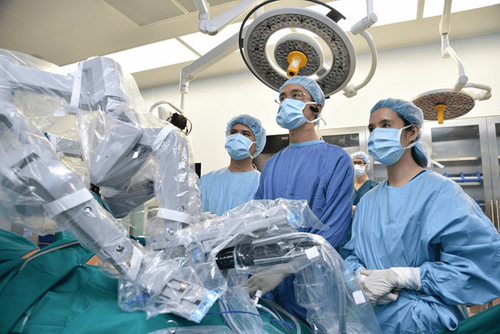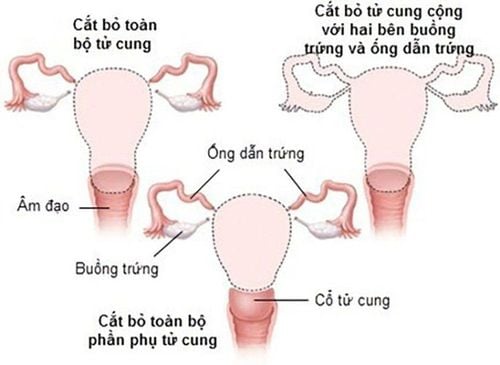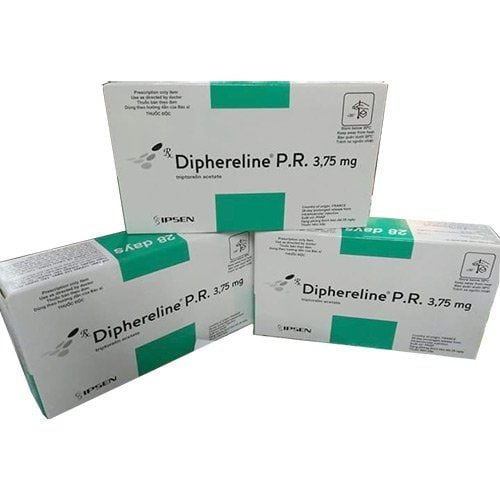This is an automatically translated article.
Hysterectomy surgery has many different methods. The choice of surgical method depends heavily on the cause of the disease and the patient's health status.
1. What is a hysterectomy?
The uterus is an important part of a woman's body with many important roles, including the function of supporting reproduction. The uterus is the place where the fertilized egg implants and develops, and is the environment where the fetus is nurtured until it leaves the womb.
Hysterectomy is a surgical intervention to remove a woman's uterus. The hysterectomy is indicated for many different reasons, but in the end, removal of the uterus means that the woman is no longer able to become a mother.
2. When is hysterectomy performed?
Hysterectomy is often a last resort when other treatments are not effective or for the purpose of being favorable in treating other more serious illnesses. The patient had time to discuss with the doctor and family before deciding on treatment. Some causes of a woman having a hysterectomy include:
Cancer of the uterus or other pelvic organs Pelvic and bladder infections Endometriosis Genital prolapse Progressive pelvic pain Abdominal bleeding Abnormal bleeding in the uterus Uterine fibroids

Cắt tử cung khi mắc u xơ tử cung
3. Hysterectomy surgical methods
Depending on the cause of the hysterectomy, the doctor prescribes different methods of hysterectomy, they include:
Vaginal hysterectomy laparoscopic hysterectomy Hysterectomy by robot Hysterectomy through abdominal incision 3.1 Vaginal hysterectomy With the method of transvaginal hysterectomy, the doctor will carry out a surgical procedure through the vagina to the uterus and perform the procedure. perform safe hysterectomy procedures. Because the surgery is done through the vagina, there is no open surgery, so the cut has a faster recovery time, limiting the risk of infection for the patient. At the same time, this procedure causes less blood loss and serious complications for the patient.
3.2 Transabdominal laparoscopic hysterectomy Laparoscopic transabdominal hysterectomy is being preferred by more and more patients because of the benefits it brings. Laparoscopic surgery helps to shorten surgery time, shorten surgery scars, faster recovery time, reduce the risk of adhesions and save treatment costs.
A transabdominal laparoscopic hysterectomy is performed by inserting a small camera and surgical instruments into the uterus through a small incision in the abdomen. The removed uterus is placed in a bag and brought out through an incision in the abdominal wall or through the vagina.
3.3 Laparotomy Instead of making a small incision to allow the laparoscope to penetrate the abdominal wall, laparotomy requires a longer incision to access the uterus. The advantage of the method of hysterectomy through open abdominal surgery is that it helps the surgeon easily observe the uterus and surrounding organs. However, open surgery also has many limitations such as high risk of infection, longer wound healing time than laparoscopic surgery, higher cost, etc. A hysterectomy with an open abdominal wall is usually indicated in cases where the patient has uterine cancer or has a large tumor in the uterus.
3.4 Robotic Hysterectomy Robotic Hysterectomy is performed laparoscopically with AI assistance. The doctor will conduct surgery by controlling the robot with surgical instruments attached. This method is called robotic-assisted transabdominal laparoscopy.

Phẫu thuật bằng robot
4. Possible complications after hysterectomy
Although hysterectomy is a surgery with few complications. However, like other surgical surgeries, having entered the body, the risk of complications can still occur. Specifically, complications after hysterectomy include:
Infection of the incision site Hemorrhage during or after surgery Injury to nearby organs Allergy to anesthetics, anesthesia Intestinal obstruction To meet the need For women's gynecological cancer screening, Vinmec International Hospital currently offers a screening package and early detection of gynecological cancer, helping to detect 4 diseases early: cervical cancer, cancer breast cancer, uterine cancer and ovarian cancer even when the patient has no symptoms.
The subjects who should use the Gynecological cancer screening and early detection package include:
Female customers, over 40 years old Customers wishing to be able to screen for pathology of breast-gynecological cancer (neck) uterus, uterus, ovaries) Customers with high risk of cancer – especially customers with a family history of breast cancer, gynecology Women of reproductive age, perimenopause Menopause and menopause Women are having symptoms of breast cancer, gynecological such as: pain in the breast, lump in the breast, bleeding outside the menstrual period, pain in the abdomen, etc.
Please dial HOTLINE for more information or register for an appointment HERE. Download MyVinmec app to make appointments faster and to manage your bookings easily.













